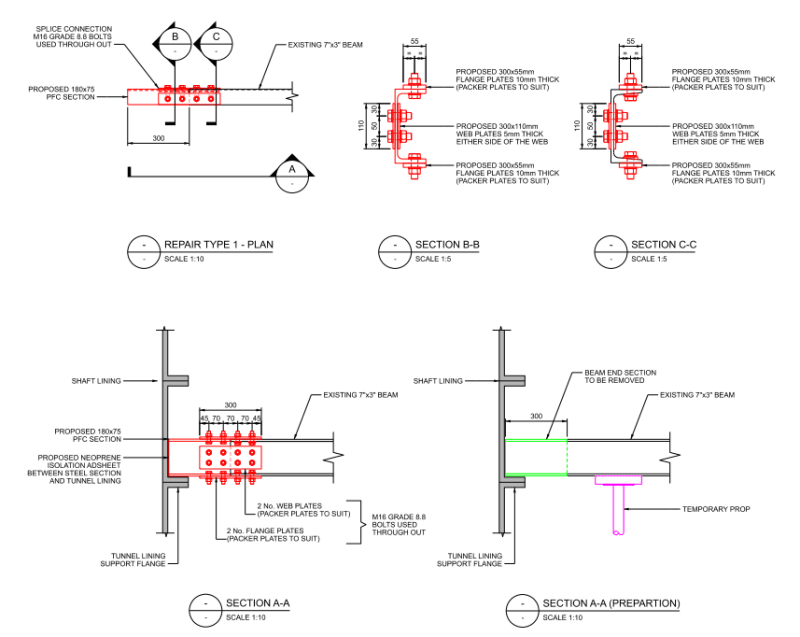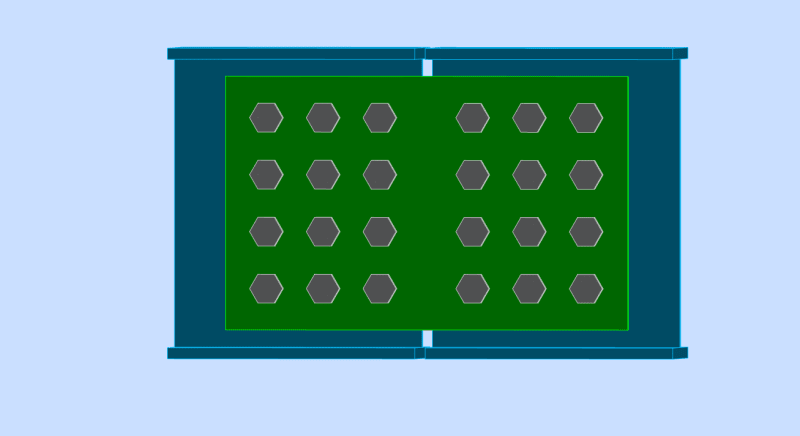Hi All,
I am currently designing a splice connection for a beam that is going to be cut at its end where a new section will be attached. I have attached an image of the proposed arrangement where the beam will be cut and the new section will be installed.
At this figure, it shows that the splice has both top and bottom flange plates as well as the web plate. However, due to site constraints and some existing beams that are present at the top flange and bottom flange, the contractor asked whether it is possible to only provide a web splice to avoid these issues.
My question is, I know that some software allow you to carry out design calculations for a web splice only (i.e. Autodesk ROBOT). However in theory, usually it is assumed that the web is only going to take the shear force and the flanges will take the bending moment. In this case, the splice connection is near the support, however it will still have some bending moment.
Do you think that providing only web connection would work?
I would appreciate any suggestions/comments on whether this is practicable and possible.
Thanks!


I am currently designing a splice connection for a beam that is going to be cut at its end where a new section will be attached. I have attached an image of the proposed arrangement where the beam will be cut and the new section will be installed.
At this figure, it shows that the splice has both top and bottom flange plates as well as the web plate. However, due to site constraints and some existing beams that are present at the top flange and bottom flange, the contractor asked whether it is possible to only provide a web splice to avoid these issues.
My question is, I know that some software allow you to carry out design calculations for a web splice only (i.e. Autodesk ROBOT). However in theory, usually it is assumed that the web is only going to take the shear force and the flanges will take the bending moment. In this case, the splice connection is near the support, however it will still have some bending moment.
Do you think that providing only web connection would work?
I would appreciate any suggestions/comments on whether this is practicable and possible.
Thanks!


